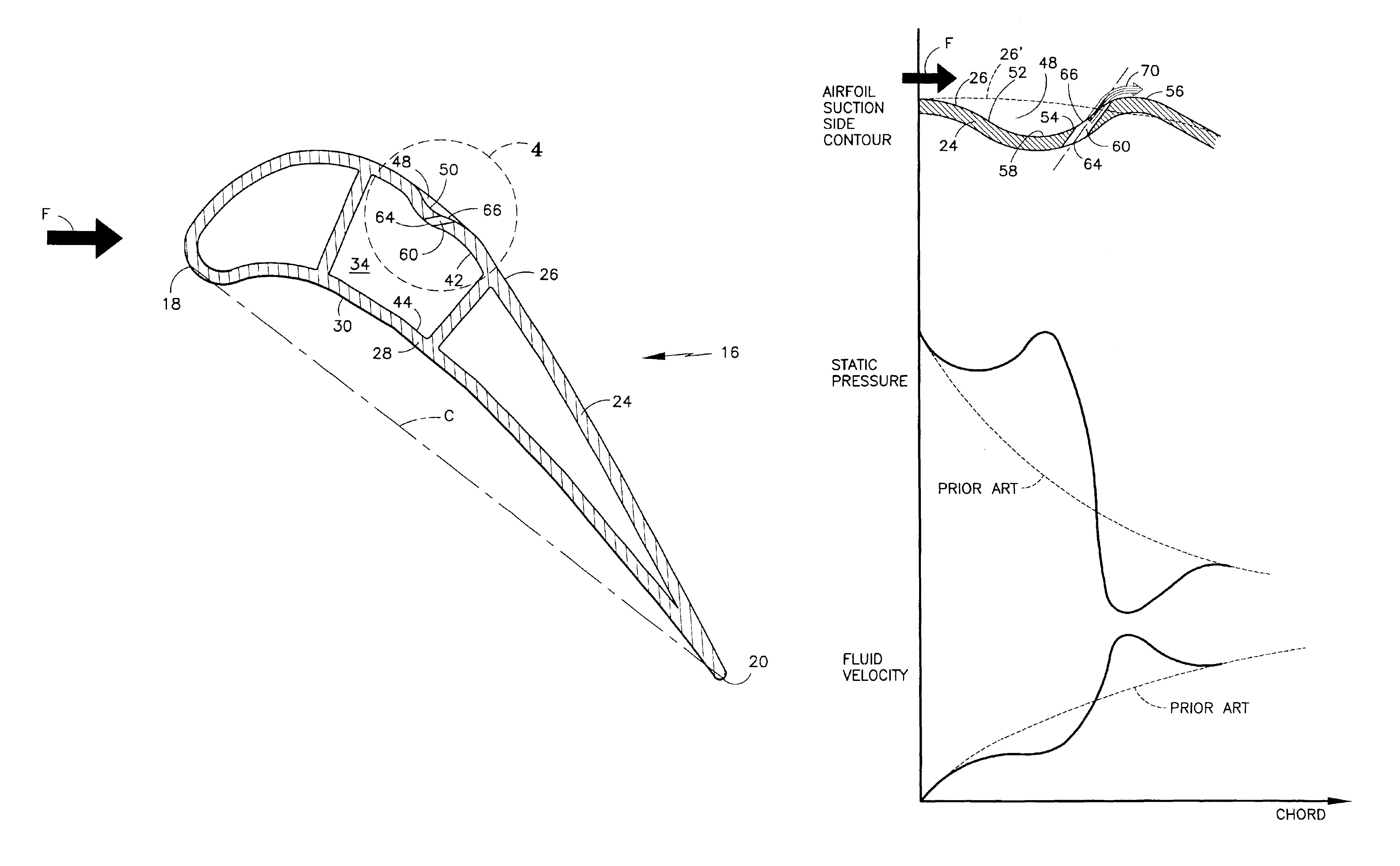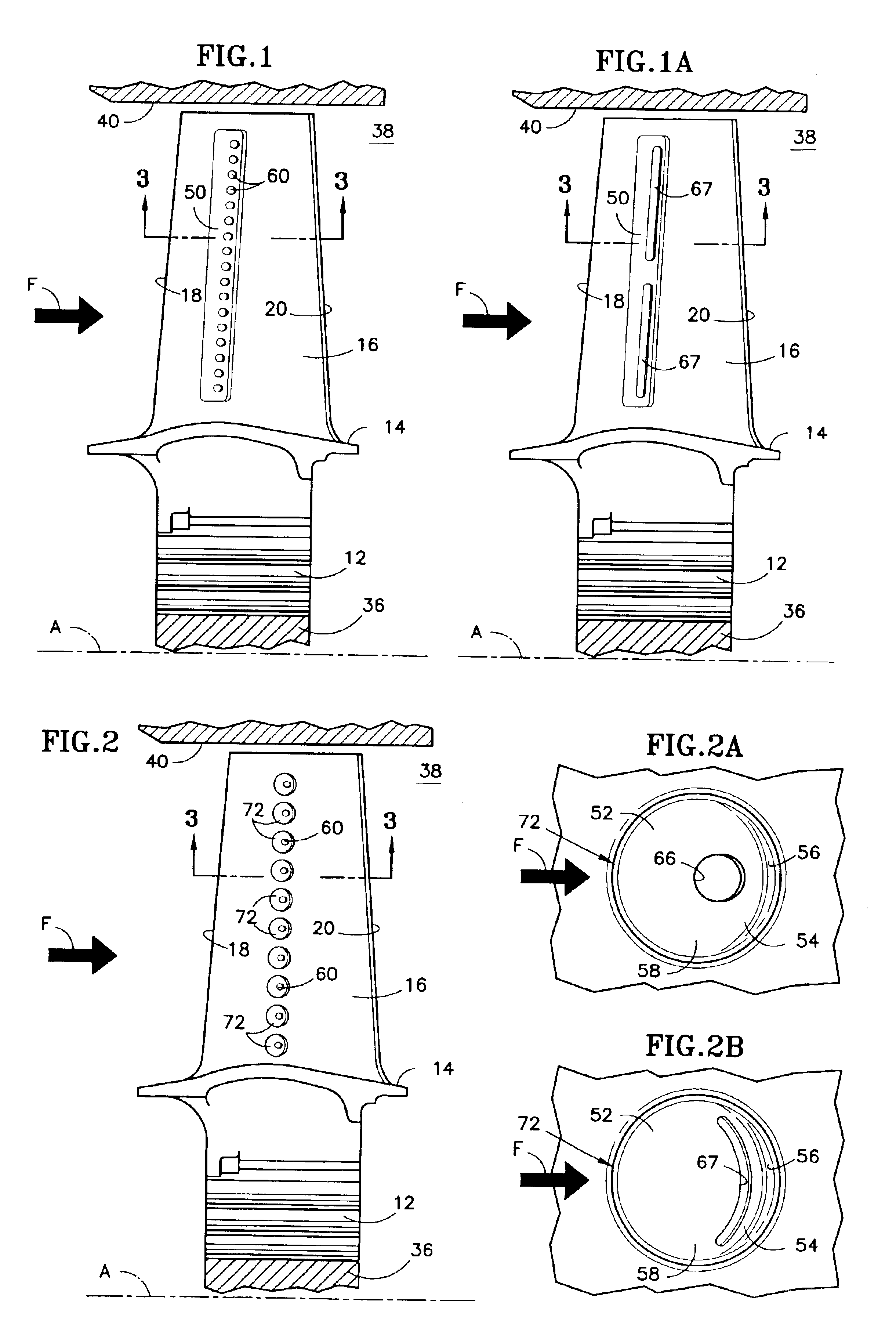Film cooled article with improved temperature tolerance
a technology of temperature tolerance and cooled components, applied in the field of film cooled articles, can solve the problems of difficult implementation in practice, loss of cooling effect of film, and difficulty in reducing so as to improve the tolerance of elevated temperatures of components, prolong the useful life of cooled components, and sacrifice component durability.
- Summary
- Abstract
- Description
- Claims
- Application Information
AI Technical Summary
Benefits of technology
Problems solved by technology
Method used
Image
Examples
Embodiment Construction
[0022]21. FIGS. 1 and 3 illustrate a turbine blade for the turbine module of a gas turbine engine. The blade includes a root 12, a platform 14 and airfoil 16. The airfoil has a leading edge 18, defined by an aerodynamic stagnation point, a trailing edge 20, and a notional chord line C extending between the leading and trailing edges. The airfoil has a wall comprised of a suction wall 24 having a suction surface 26, and a pressure wall 28 having a pressure surface 30. Both the suction and pressure walls extend chordwisely from the leading edge to the trailing edge. One or more internal plenums, such as representative plenum 34, receive coolant from a coolant source, not shown. In a fully assembled turbine module, a plurality of circumferentially distributed blades radiates from a rotatable hub 36, with each blade root being captured in a corresponding slot in the periphery of the hub. The blade platforms collectively define the radially inner boundary of an annular fluid flowpath 38....
PUM
 Login to View More
Login to View More Abstract
Description
Claims
Application Information
 Login to View More
Login to View More - R&D
- Intellectual Property
- Life Sciences
- Materials
- Tech Scout
- Unparalleled Data Quality
- Higher Quality Content
- 60% Fewer Hallucinations
Browse by: Latest US Patents, China's latest patents, Technical Efficacy Thesaurus, Application Domain, Technology Topic, Popular Technical Reports.
© 2025 PatSnap. All rights reserved.Legal|Privacy policy|Modern Slavery Act Transparency Statement|Sitemap|About US| Contact US: help@patsnap.com



